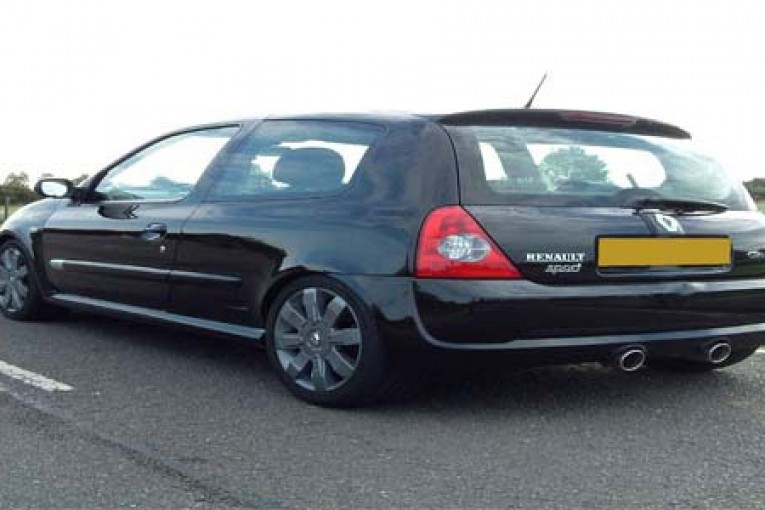
The Renault Clio 2.0 Sport in its Mk2 guise was introduced by Renault Sport in 1998 and face-lifted in 2004. With over 13,000 vehicles on UK roads the 2.0 Sport may not be as popular as some of the smaller engine variants but it is still a worthy subject of an LuK ‘Clutch Clinic’.
With a lengthy removal process which is reflected in a removal time of more than seven hours, this handy article will undoubtedly be an essential read for any garage in the UK aftermarket.
No special tools are required to complete the repair. The only additional tools needed are a transmission jack, an engine support cradle and a long axle stand. A two-post ramp was used in this example and it is recommended that a four post-ramp is not used as it may not provide enough clearance. For the sake of safety it’s considered best practice to disconnect the battery earth lead before commencing work. If the vehicle has alloy wheels it may be fitted with anti-theft wheel bolts, so make sure you have the key before you start.
Getting to it
Open the bonnet and disconnect both battery terminals. Undo the battery clamp and remove the battery. Undo the jubilee clips (pictured below) securing the air inlet pipe and remove the connected breather.
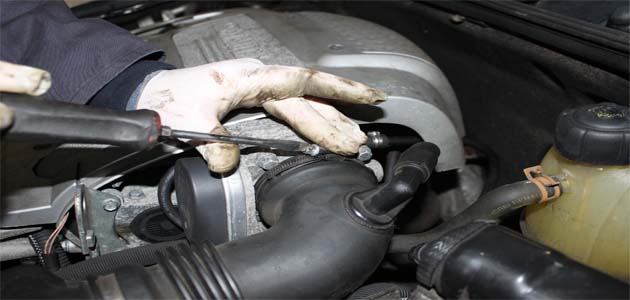
Lift the inlet pipe out and undo the two air filter housing securing bolts (pictured below).
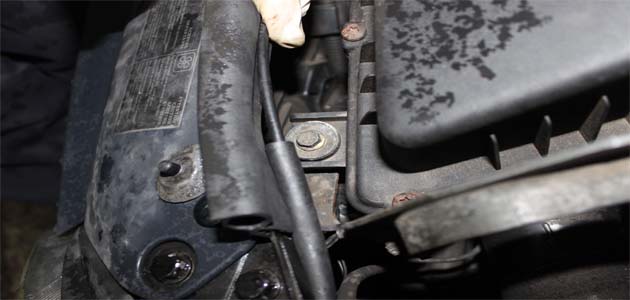
Lift out the air filter housing slightly and disconnect the inlet pipe underneath. Unclip the plastic inlet pipe attached to the slam panel housing and remove. Remove the air filter securing brackets and remove the complete air filter housing.
Retract and unclip the clutch cable and disconnect the fuel injection control unit connector. Undo the bracket attached to the gearbox supporting the ECU harness and remove the earth lead attached to the rear. Remove the large single gearbox mounting nut and the smaller bolts on either side (pictured below).
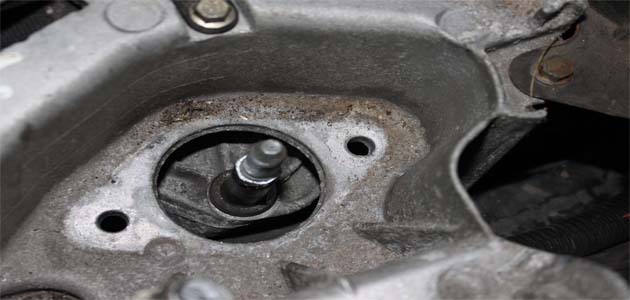
These smaller bolts are not captive and will need to be held from underneath. Undo the bolts securing the gearbox mounting bracket and lift the mount from under the battery tray. Undo all visible upper bell-housing bolts, support the engine with the support cradle and raise the vehicle to waist height.
Remove the nearside front road wheel and the associated hub nut. Remove the front nearside wheel arch liner and raise the vehicle to full working height. Drain the gearbox oil and unbolt the nearside bottom ball joint fixing (pictured below).
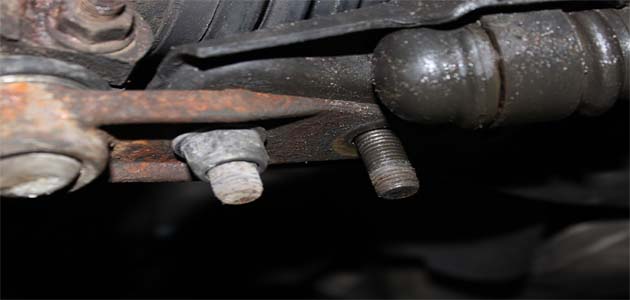
With care, knock the short shaft out of the hub and stow it to one side. Remove the three bolts (pictured below) securing the driveshaft to the gearbox and remove the driveshaft.
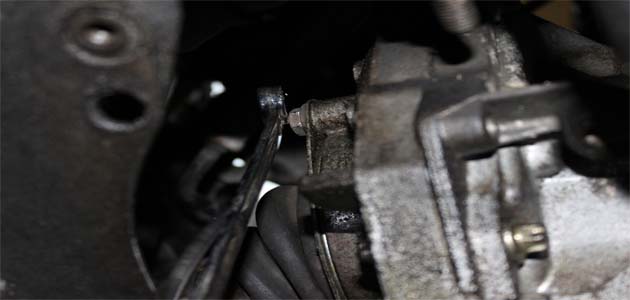
Unbolt the rear gearbox support mounting (pictured below) and undo the three starter motor bolts and stow it to one side.

Remove the nearside suspension link and the two earth leads attached to the gearbox. Unbolt the lower gearbox mounting (pictured below) and undo the subframe bolts, allowing it to lower on the nearside.
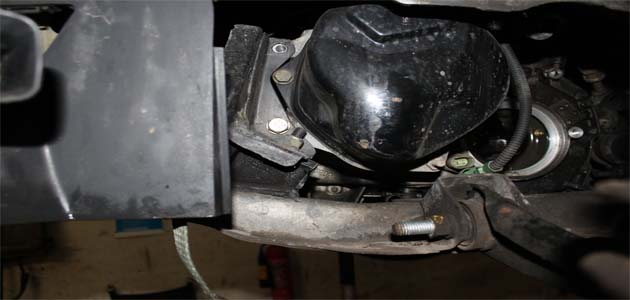
Disconnect the reverse light switch and remove the two rear suspension brackets. Remove the remaining bell housing bolts and, with support, lower the gearbox onto the subframe. You should now have enough clearance to remove the clutch and release bearing.
With the clutch removed, check the flywheel for signs of heat stress. Clean the first motion shaft splines and any debris from the bell housing (especially important when a release bearing has failed).
Wrapping up
Put a small dab of high melting point grease (not a copper-based product) on the first motion shaft splines and make sure the new driven plate slides freely back and forth. This not only spreads the grease evenly but also makes sure you have the correct kit. Wipe any excess grease off the shaft and driven plate hub. Using a universal alignment tool and checking the driven plate is the correct way round (note “Getriebe Seite” is German for “Gearbox Side”), the clutch can be bolted to the flywheel evenly and sequentially.
Before fitting the gearbox make sure the locating dowels are in place and not damaged. Refit any that have become dislodged and refit the gearbox. Make sure the gearbox bell housing bolts are secured before lowering the jack. Refitting is the reverse of the removal.









